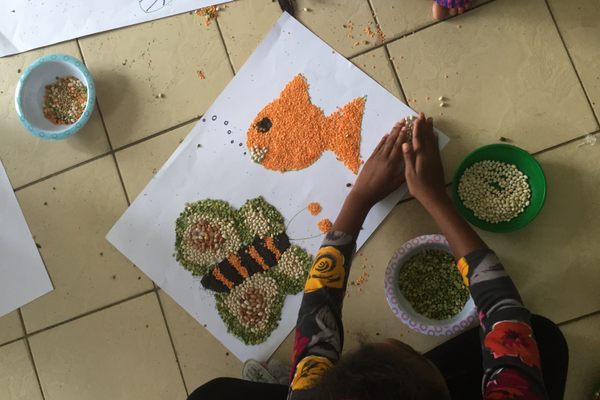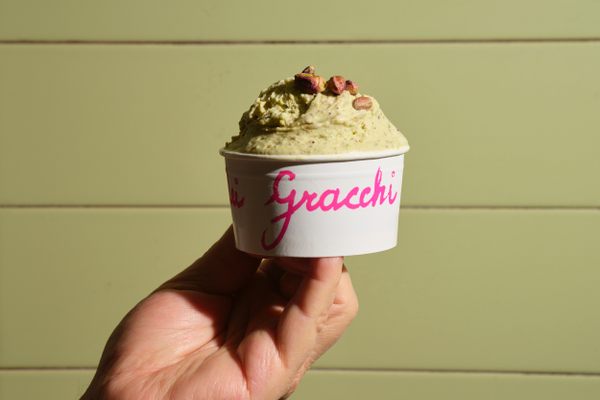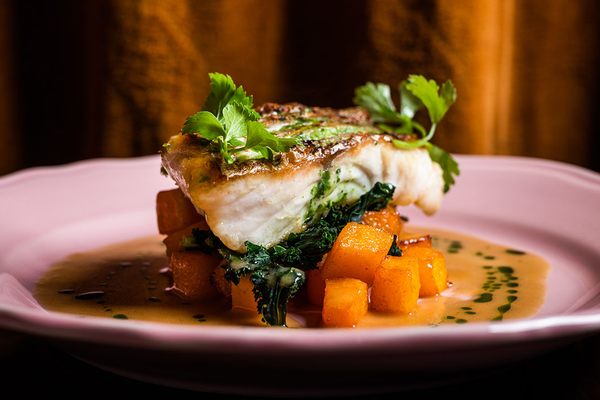

Meet the Great Seed Detective
Adam Alexander preserves heirloom vegetables and the history they represent.
Tucked away behind a modest-sized home in Wales is a living repository of human history. Here, on a 3.5-acre garden, Adam Alexander grows around 100 varieties of fruits and vegetables at any given time. The fertile ground contains the progeny of seeds scooped up at markets from Aleppo, Syria, to Yangon, Myanmar. Carefully stored inside his home are jars containing more than 500 different types of heirloom seeds. At least 20 varieties are ones that might have gone extinct without Alexander’s intervention.
By some estimates, as much as 90 percent of crop varieties have disappeared, replaced by monocultural fields of corn, wheat, and soy. While nowadays a handful of varieties of corn, tomatoes, and other vegetables dominate the produce aisle, humanity once cultivated a wildly more biodiverse array of plants. In his forthcoming book The Seed Detective: Uncovering the Secret Histories of Remarkable Vegetables, which comes out September 29, Alexander traces the origins and evolution of vegetables that have shaped human civilization.
The book is the culmination of more than three decades of Alexander’s efforts to save endangered heirloom seeds from around the globe, as well as the stories they represent. He’s sometimes referred to as the “Indiana Jones of Vegetables,” although unlike Harrison Ford’s character, he has no interest in pillaging treasures only to let them rot in a museum.

As one of 180 volunteer “Seed Guardians” across the United Kingdom for the Heritage Seed Library, his goal is to keep his findings alive—and repatriate them whenever possible. Alexander sends some of his crop to seed banks throughout the United States, Canada, and the European Union. Meanwhile, some of his seeds, like those from Aleppo, are destined to grow in gardens belonging to members of the scattered Syrian diaspora.
I spoke with Alexander about how ancient Greek athletes used garlic to juice, why Egyptian priests viewed garlic as strictly taboo, and why common vegetables like carrots and tomatoes once looked completely different.
When did you first get into gardening?
I spent my formative years at a biodynamic garden in a Rudolf Steiner school in the south of England. I was there in the 1960s and we were a rebellious lot. Whenever I was given detention, I was to spend it in the two-acre walled garden of the school. The food at the school was pretty filthy, but what I discovered was actually growing vegetables, rather than being a chore, was a joy. I enjoyed my time in the garden so much that I was happy to be as naughty as I could so I got more detention.
Did you ever think about trying to become a farmer?
I set up a market garden in 1976. That was a big problem because if you were an organic farmer, people thought you were a hippy or a drug addict or mad. I was already interested in growing unusual things, but the world was not ready for yellow [zucchini] and purple Brussels sprouts. So I went back to filmmaking for a living and grew fruit and veg for pleasure.
In the book, you make the point that the wild ancestors of carrots in Afghanistan were never orange. How many of our popular cultivated vegetables once looked nothing like they do today?
Most of them. What I try to do in my travels is to find the narrative that takes me right back to that wild parent. Selective plant breeding is very, very recent in the history of plant domestication. If we take tomatoes, there’s one wild tomato that’s responsible for our tomatoes today. It has tiny sweet red berries, but it’s nothing like a big beefsteak modern tomato.
What was the turning point in your travels that made you want to learn more about the origins of plants?
In Donetsk, Ukraine, in the late 1980s, my interpreter and I went to the local market. And that was where I discovered a pepper that was both sweet and fiery. I thought, I wonder if I save some seeds and bring them home, will I be able to grow them? That’s what started my real interest in local varieties, but most particularly in how what we grow and eat is so much of a part of our cultural identity.
Ukraine isn’t the only country forever changed by conflict that you’ve visited. What was Syria like in 2011?
Syria was the breadbasket of the Middle East. It’s an incredibly important part of the world for the diversity of food. It’s where so many of the old crops started. Particularly in Aleppo, they had a very vibrant plant-breeding sector. I was in Palmyra and I was presented with a fava bean salad. It was absolutely delicious. The fava beans were huge, about the size of my thumb. I asked where they came from and the chef said he had a farm in an oasis in the middle of the desert. When I took the seeds home and grew them, I realized they were a very, very old variety. The fava bean was one of the first plants to be domesticated by our Neolithic farmer ancestors 8,000 years ago.
It’s pretty wild to think that the history of fava beans goes so far back into human history.
What’s interesting about so many of these vegetables was they had all sorts of different connotations [throughout history]. In Egypt, there was this superstition with fava beans that they should be avoided at all costs. Priests considered it a crime to even look at a fava bean because they thought the bean was unclean.

You have to wonder how superstitions like that get started. Who first looked at a little fava bean and went, “Well, that seems like poison.”
[They] proved fatal to Pythagoras. He was highly allergic to fava beans. He was fleeing from some assassins and his only route to escape was through a field of fava beans, so he faced his assassins and came to a bloody end. I don’t know whether that story is true or not, but it’s part of the mythology of our food.
At a certain point, does it even matter if it’s true if it makes for a great story?
All these stories are so human, aren’t they? They’re about us. Our peccadillos and prejudices and preconceptions. On television, we used to call them “fuck-me-facts.” Imagine, you’re standing around the water cooler and you go “Fuck me, I didn’t know that.”
Do you have a favorite fuck-me-fact?
One of my favorite fuck-me-facts is that garlic was one of the first performance-enhancing drugs. The ancient Greeks gave it to their athletes to make them run faster. Lettuce was also considered by the Greeks to be soporific. And practically any old plant everything that looked like a penis was an aphrodisiac—so asparagus, of course.

Beyond the fact that they’re entertaining, why do you think we should remember these things?
What really drove the book was the untold story of our relationship with what we grow and eat. In the UK and the States, we have lost that relationship with what we grow and eat. We’ve been losing our relationship with local varieties and the stories behind them and why we put them into our cuisine because we’re generations removed.
What’s one example of something surprising you learned in your “seed detective” research about a vegetable we take for granted now?
Now, when you go into the supermarket and you buy a packet of frozen peas, it’s just a bag of peas. But people were once completely mad on peas, particularly North America and Europe. When you look at the New York catalog of vegetables at the end of the 19th century, there were over a thousand pea varieties in it. People went mad. Breeders went mad. They’d steal each other’s peas and they’d rename them. What it was all about was that people really cared about it. They wanted to grow the seeds with a story behind them.
What have you done with some of the more unusual seed varieties you’ve salvaged?
When Syria turned into a bomb site and Aleppo was destroyed, I started to grow some of these varieties from the seeds that I had brought back. I thought, wouldn’t it be good to connect the displaced people of the Syrian diaspora with some of these local varieties? Now, I’m growing all sorts of Ukrainian vegetables, so that if Ukrainians coming to the UK want to grow their own melons or cucumbers, they can.
Gastro Obscura covers the world’s most wondrous food and drink.
Sign up for our regular newsletter.

































Follow us on Twitter to get the latest on the world's hidden wonders.
Like us on Facebook to get the latest on the world's hidden wonders.
Follow us on Twitter Like us on Facebook